Etiqueta "HTML"
Se han encontrado 16 Coincidencias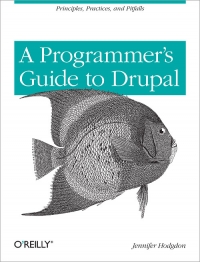
Programmer's Guide to Drupal
Principles, Practices, and Pitfalls
185 Visitas | 259 Descargas | 2013-09-12 19:15:05 | jgramos
If you're a web programmer new to Drupal, this book shows you which programming techniques you can use - and which you should avoid - when building custom web applications with this content management framework. Drupal has its own set of programming principles that require a different approach, and many programmers make mistakes when relying on skills they've used for other projects. The guidelines in this book help you through the transition by demonstrating which programming practices conform to the "Drupal way," and which don't.

Professional WordPress Plugin Development
162 Visitas | 276 Descargas | 2013-09-13 22:01:01 | jgramos
As one of the most popular open source content management systems available today, WordPress boasts a framework that allows you to easily customize and extend it through plugins. This comprehensive book shows you how plugins work, reviews the tools and APIs in WordPress, and demonstrates how to extend the functionality of WordPress with plugins. The trio of authors provides a practical, solutions-based approach along with a collection of timely examples and plenty of code, all aimed at clearly explaining how to create a plugin file, work with users, integrate widgets, add menus and submenus, secure your plugins, and more. You will quickly come to understand how to develop custom plugins so that you can take WordPress to the next corporate and enterprise level.
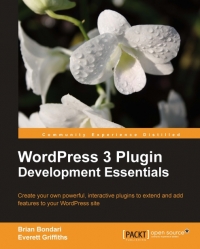
WordPress 3 Plugin Development Essentials
Create your own powerful, interactive plugins to extend and add features to your WordPress site
127 Visitas | 277 Descargas | 2013-09-13 22:02:50 | jgramos
WordPress is one of the most popular platforms for building blogs and general websites. By learning how to develop and integrate your own plugins, you can add functionality and extend WordPress in any way imaginable. By tapping into the additional power and functionality that plugins provide, you can make your site easier to administer, add new features, or even alter the very nature of how WordPress works. Covering WordPress version 3, this book makes it super easy for you to build a variety of plugins. WordPress 3 Plugin Development Essentials is a practical hands-on tutorial for learning how to create your own plugins for WordPress. Using best coding practices, this book will walk you through the design and creation of a variety of original plugins.
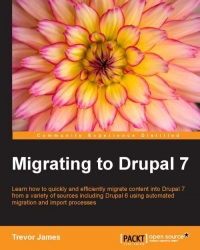
Migrating to Drupal 7
Learn how to quickly and efficiently migrate content into Drupal 7
111 Visitas | 179 Descargas | 2013-09-16 15:19:38 | jgramos
Learn how to import content and data into your Drupal 7 site from other websites, content management systems, and databases. Upgrade your Drupal 6 site to Drupal 7 and migrate your CCK based content into the Drupal 7 fields based framework. Use modules that will automate the import and migration process including the Feeds and Migrate modules. Run additional imports using the Feeds modules to update and add new data and content to your Drupal site.
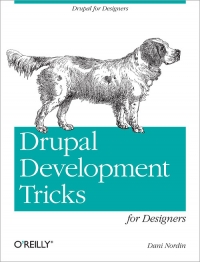
Drupal Development Tricks for Designers
A Designer Friendly Guide to Drush, Git, and Other Tools
107 Visitas | 188 Descargas | 2013-09-16 15:21:05 | jgramos
Take your Drupal skills even further with valuable tricks for making site building truly efficient. In this concise guide - the third in a series by award-winning designer Dani Nordin - you'll learn how to set up your own development environment, quickly update your modules, and use version control to protect yourself from bonehead mistakes. Handle repetitive tasks with ease, avoid hours of frustration, and devote more time to pushing the envelope of Drupal design - just by picking up the basics of a few developer tools. It's much more than simple coding; it's real, honest-to-goodness developer Ninja Magick.
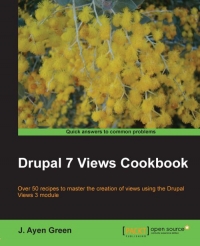
Drupal 7 Views Cookbook
133 Visitas | 203 Descargas | 2013-09-16 15:22:42 | jgramos
Brand new recipe examples using the all new Views 3 UI. A wide variety, including multi-display and programmatic views. Easy-to-follow recipes with plenty of screenshots and demonstrations. Present menu choices for categorized subsets of your content. Create blocks containing interesting lists or randomly selected images. Manipulate the templates to add pizzazz to your views. Administer your views with confidence.
.png)
Head-First HTML5 Programming
407 Visitas | 647 Descargas | 2013-09-17 04:33:17 | rmillo
What can HTML5 do for you? If you're a web developer looking to use this new version of HTML, you might be wondering how much has really changed. Head First HTML5 Programming introduces the key features -- including improved text elements, audio and video tags, geolocation, and the Canvas drawing surface -- and uses concrete examples and exercises to apply and reinforce these concepts. You'll learn how HTML5, Javascript, and CSS3 will help create fast, interactive sites with fewer plugins. * Get the low-down on changes to the basic HTML markup * Explore CSS3, and discover how it compliments HTML5 * Understand JavaScript's relationship to HTML5 * Learn HTML5's new font, multicolumn, and text capabilities * Bring out your inner artist with Canvas * Use the technology to add audio and video * Take advantage of local storage and databases * Learn how HTML5 deals with geolocation, multitouch, and more We think your time is too valuable to waste struggling with new concepts. Using the latest research in cognitive science and learning theory to craft a multi-sensory learning experience, Head First HTML5 Programming uses a visually rich format designed for the way your brain works, not a text-heavy approach that puts you to sleep.
.jpg)
Beginning jQuery
Beginning jQuery is your step-by-step guide to learning the jQuery library.
181 Visitas | 459 Descargas | 2013-09-17 13:56:03 | moliver
Beginning jQuery is your step-by-step guide to learning the jQuery library. jQuery is the most popular JavaScript library in the web developer’s toolkit. Jack Franklin takes you from the basics of getting you started with jQuery, right through to extending jQuery by writing your own plug-ins. You'll discover best practices you can follow, how you can avoid common mistakes, and you'll learn about so many of the things that jQuery has to offer, including how you can: Use jQuery’s powerful tools to dynamically update content on your site, including DOM manipulation. Extend jQuery’s capabilities by writing your own plugins on top of the framework. Animate elements and build your own jQuery slider. Employ best practices and avoid common errors made by beginners.
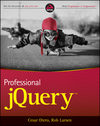
Professional jQuery
This book covers jQuery including a developer-level introduction and an in-depth look into some of the more advanced features. The book focuses on features available as of jQuery 1.7.1. but also tries to incorporate feature support in older versions of the library wherever it is relevant.
204 Visitas | 381 Descargas | 2013-09-17 14:44:49 | moliver
This book covers jQuery including a developer-level introduction and an in-depth look into some of the more advanced features. The book focuses on features available as of jQuery 1.7.1. but also tries to incorporate feature support in older versions of the library wherever it is relevant. The first few chapters will help you set up a development environment and review important JavaScript concepts. Detailed coverage includes: functions that make up the library and usages of the core jQuery functions in-depth to select and manipulate HTML elements with jQuery the cross-browser ability to bind and manage browser events Ajax shortcuts jQuery offers for animating components in your web applications including moving, fading, toggling, and resizing elements jQuery UI, which is an associated user interface library for jQuery and contains things such as widgets, effects, animations, and interactions additional jQuery UI features including moving, sorting, resizing, and selection elements with a mouse techniques, best practices, and patterns that you can apply to your code to make it more efficient, maintainable, and clear jQuery Template plugin authoring jQuery plugins. jQuery Deferred Object unit testing and detail of the specific unit testing framework created by and used by the jQuery project itself, QUnit. If you have experience with HTML, CSS, and JavaScript, this book is for you. For existing jQuery users, it will expand your jQuery knowledge by focusing on the core library with the benefit of strong core JavaScript expertise in many of the lessons. But this book is not aimed at beginners. For those looking to start with the basics of HTML, CSS, and JavaScript/jQuery development, Beginning JavaScript and CSS Development with jQuery by Richard York will most likely help you more. http://www.wrox.com/WileyCDA/WroxTitle/productCd-1118026683.html
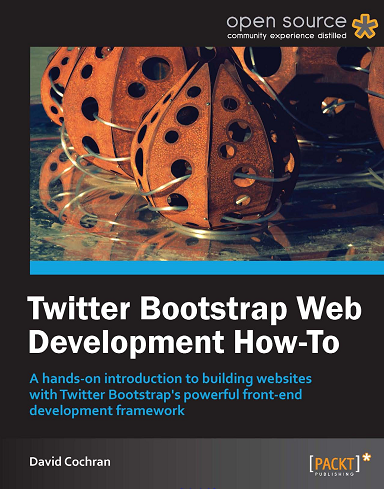
Twitter Bootstrap Web Development How-To
232 Visitas | 407 Descargas | 2013-09-23 15:39:23 | jgramos
Welcome to Twitter Bootstrap Web Development How-To. The content of this book is up to date with version 2.1 of Twitter Bootstrap. In what follows, this book will help you to get to know Twitter Bootstrapby trying it on for size. I've written with the novice to intermediate developer in mind. If you've been designing sites for a while, then this book will give you a quick introduction to several key features of Twitter Bootstrap's markup, stylesheets, and JavaScript plugins. If you're new to HTML and CSS (and maybe even a little scared of JavaScript)—don't worry! This book will help you along. If, by contrast, you're looking to compile CSS from LESS and integrate the results with Backbone.js—this isn't for you. Fair enough? Let's dive in.
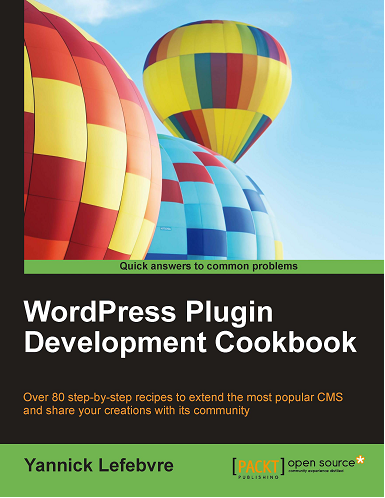
WordPress Plugin Development Cookbook
139 Visitas | 210 Descargas | 2013-09-26 13:18:48 | jgramos
Developing plugins for WordPress is the next big thing for you if you are an administrator looking to enhance a personal site with custom functionality for which no plugin exists, a developer looking to enhance the WordPress platform with new ideas for the community, or a website designer building a specific project for a client. Learning how to create WordPress plugins will allow you to unleash the full potential of the most popular web content management system.
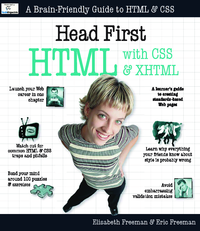
Head-First Html with Css and Xhtml
141 Visitas | 401 Descargas | 2013-10-03 13:21:02 | efirvida
All of the code that you write during the course of going through this book is standards compliant. This is really important to us, and we would (adamantly) argue that understanding how to think in and write standards compliant XHTML (XHTML 1.0 Strict) & CSS (CSS 2.1) is one of the hallmarks of a talented web designer. There will be no tables for layout, no style information in your markup, and all those tags will be properly closed.
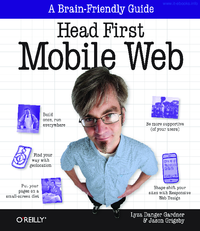
Head-First Mobile Web
126 Visitas | 277 Descargas | 2013-10-03 16:33:22 | efirvida
Your business needs a mobile strategy, but where do you start? Head First Mobile Web shows how to use the web tech- nology you’re already familiar with to make sites and apps that work on any device of any size.
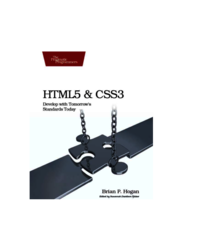
HTML5 and CSS3
252 Visitas | 426 Descargas | 2013-10-03 19:51:52 | efirvida
HTML5 and CSS3 help lay the groundwork for the next generation of web applications. They let us build sites that are simpler to develop, easier to maintain, and more user-friendly. HTML5 has new elements for defining site structure and embedding content, which means we don’t have to resort to extra markup or plug-ins. CSS3 provides advanced selectors, graphical enhancements, and better font support that makes our sites more visually appealing without using font image replacement techniques, complex JavaScript, or graphics tools. Improved accessibility support will improve Ajax applications for people with disabilities, and offline support lets us start building working applications that don’t need an Internet connection.

Introducción a XHTML
127 Visitas | 173 Descargas | 2013-10-31 16:29:43 | jgramos
Definiéndolo de forma sencilla, "HTML es lo que se utiliza para crear todas las páginas web deInternet". Más concretamente, HTML es el lenguaje con el que se "escriben" la mayoría de páginas web. Los diseñadores utilizan el lenguaje HTML para crear sus páginas web, los programas que utilizan los diseñadores generan páginas escritas en HTML y los navegadores que utilizamos los usuarios muestran las páginas web después de leer su contenido HTML.
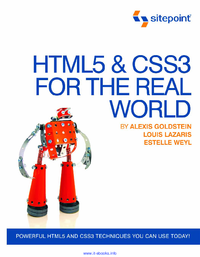
HTML5 & CSS3 for the Real World
HTML5 & CSS3
117 Visitas | 185 Descargas | 2015-11-19 20:59:01 | pecarrazana
This book is aimed at web designers and front-end developers who want to learn about the latest generation of browser-based technologies. You should already have at least intermediate knowledge of HTML and CSS, as we won’t be spending any time covering the basics of markup and styles. Instead, we’ll focus on teaching you what new powers are available to you in the form of HTML5 and CSS3. The final two chapters of this book cover some of the new JavaScript APIs that have come to be associated with HTML5. These chapters, of course, require some basic familiarity with JavaScript—but they’re not critical to the rest of the book. If you’re unfamiliar with JavaScript, there’s no harm in skipping over them for now, returning later when you’re better acquainted with it.
Contribuir
Usted puede contribuir con Libros UCLV, es importante para nosotros su aporte..
Contribuir